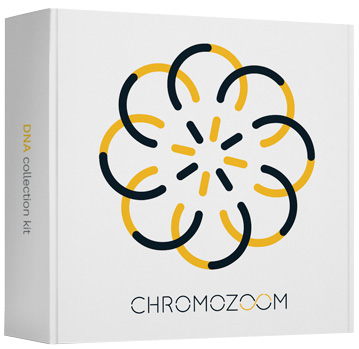Solar radiation and effect thereof on skin
The sensitivity of the skin to UV radiation depends on the degree of pigmentation. Thus, the colour of the skin determines the sensitivity to UV radiation. Solar radiation has certain beneficial effects on human health, but particularly in individuals with decreased pigmentation, it can be very harmful. Depending on the level of pigmentation, we distinguish between several phototypes assessed according to your hair, eye and skin colour, and response to the exposure to solar radiation.
Each phototype responds to the sun differently. In general, the lower the phototype number, the lower the resistance to ultraviolet radiation. Pigmentation determines the rate of the prediction of skin impairment due to solar radiation effects, which can cause melanoma in later stages.In 1975, Thomas B. Fitzpatrick, a dermatologist at Harvard, established a numerical classification of skin colour called the Fitzpatrick scale. This is a method for classifying the response of different types of skin to UV radiation. Sometimes, we can see a division into six phototypes, from the lightest to very dark, but more commonly the division into the four phototypes described and defined in the picture.
Keratinocytes
Keratinocytes are the major skin cells, which represent up to 95% of all cells in human skin. Keratinocytes contain melanin pigment.
Melanin production
Pigmentation of the skin is caused by a pigment called melanin, which is produced by specific cells - melanocytes. In the cytoplasm of these cells are included melanosomes, which serve for the production and accumulation of melanin in the pigment cells. When melanocytes are mature, they move into the surface layers of the skin.
In human skin, melanin production is mainly stimulated at the time when DNA damage occurs due to the effects of solar radiation. Thus, if the skin cells are exposed to UV radiation, the production of the melanotropin hormone occurs, which promotes the production of melanin in melanocytes. Melanin in small portions then gets from the melanocytes into neighbouring keratinocytes, and causes tanning. Thus, visible skin colouration is a result of the presence of melanin in keratinocytes.
Two types of melanin are found in the skin, a brownish-black pigment eumelanin and a reddish brown pheomelanin. The ratio and amount of these pigments in the skin and the phototype of the skin are determined by your genes. And the various skin colours in different ethnicities is apparently an adaptive mechanism to the intensity of solar radiation at the site where the population developed. Different skin colours vary in terms of the size, shape and different clusters of melanosomes.
Do not disregard protecting against solar radiation! Every burn means an increase in the probability of future skin cancer. Excessive sunbathing and repeated burning of the skin also greatly accelerate skin ageing.
Skin colour is caused by the presence of four biochromes (biological pigments)
- Oxyhaemoglobin (haemoglobin that binds oxygen - a bright red colouration)
- Reduced haemoglobin (haemoglobin after the release of oxygen - dark purple colouration)
- Carotenoids (red, yellow and orange pigments)
- Two types of melanin (pheomelanin - red / brown, eumelanin - brown / black)
Burning of skin
The rate of UV radiation to which the skin can be safely exposed depends on the amount of melanin in the skin, thus on the degree of pigmentation. Burning of the skin through solar radiation effects the results in an acute inflammatory response in the skin manifested by redness, swelling, pain, and in certain cases, blistering.
Skin capillaries expand (vasodilation), skin becomes red, and heat is radiated to the surrounding area. Swelling of the skin is the result of the accumulation of lymphocyte (white blood cells) due to the inflammation and the leakage of fluid outside the capillaries. The pain of the skin to the touch is caused by increased hypersensitivity of peripheral nociceptors (pain receptors). This impairment leads to changes in the skin dermis (corium - the second layer of the skin), leading to the death of keratinocytes.
After 48-72 hours follows the increased multiplication of keratinocytes with an enlargement of the epidermal thickness and stratum corneum layer (surface layer of the epidermis). The stratum corneum of the skin reflects and absorbs the incident UV radiation. Thickening of this layer in response to UV irradiation is a physiological protective mechanism that prevents the penetration of radiation into deeper skin structures and the damage thereof. These acute changes are temporary, usually entirely disappear, and the skin returns to its normal condition. Repeated exposure of the skin to the effects of solar radiation for days to weeks leads to a number of changes in the structure of the skin different from the acute response. The risk of developing melanoma in keratinocytes and melanocytes increases. Changes in the dermis and the epidermisof the skin cause a decrease in the layer and a reduction in the quality of the corium and its elasticity, accompanied by wrinkle formation and skin aging.
Ultraviolet (UV) radiation
Exposure to UV radiation causes a number of acute and chronic changes in the body, while the extent and intensity thereof are modified by individual factors, the time and intensity of the exposure, genetically conditioned resistance, and the current condition of the body. From the point of view of biological effects, UV radiation can be classified into the spectral regions of UVA, UVB and UVC. Due to the atmospheric ozone, which absorbs UVC, incident sunlight is made up of UVA (90% -95%) and UVB (5% -10%).
UV radiation penetrates the skin depending on the wavelength. The long wavelength of UVA radiation penetrates deep into the dermis. UVB radiation is almost completely absorbed in the epidermis epidermis, while only a very small portion gets into the dermis.
UVA radiation causes the generation of free radicals, which can damage DNA. In the case of UVB, radiation is directly absorbed by DNA molecules, resulting in the generation of specific photoproducts, such as cyclobutene dimers and 6-4 photoproducts. These DNA modifications alone may in later stages cause skin cancer.
